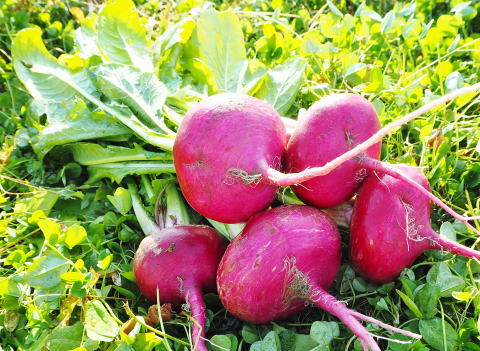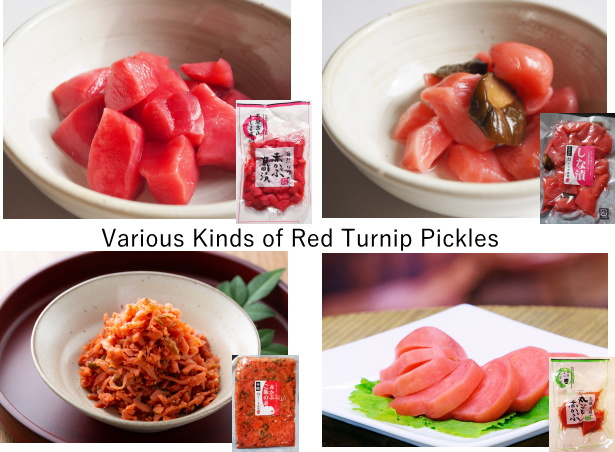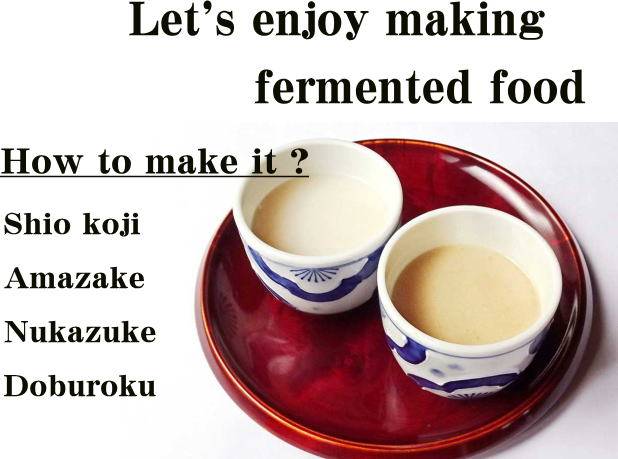Manufacture of traditional-style pickled food and grower of organic vegetables
Traditional Japanese pickles Agriculture
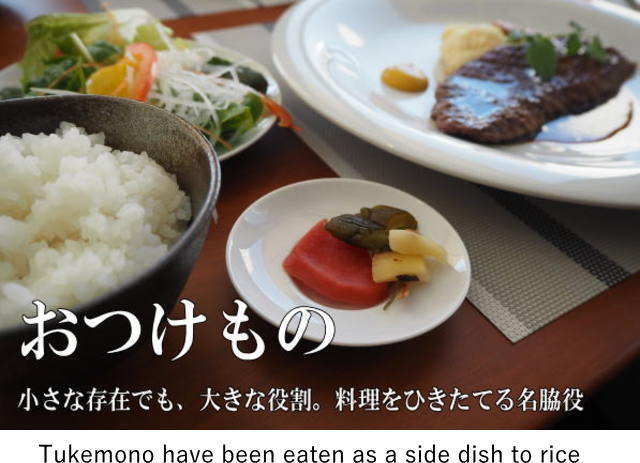
Fermented Food Culture
preserved food for the duration of winter
Japan is a land full of natural beauty. There are four distinct seasons
in Japan, and people live surrounded by abundant natural resources. In
particular, the temperature drops below the freezing point during the winter
in Hida Takayama. There are often severe weather conditions with a lot
of snow. As a way to secure preserved food for the duration of winter,
a fermented food culture has developed. Making pickled vegetables, miso,
soy sauce and sake have been popular since ancient times.
In the old days, every Japanese(HidaTakayama) house had a designated tsukemono-room
facing north-east with no sunlight and there were usually about four barrels.
One was for miso, two were for tsukemono, and another for home-made soy
sauce. The tsukemono-culture was a resourceful way of compensating for
the lack of fresh vegetables during the winter months. However, within
the last 20 years or so, the traditions of creating hand-made tsukemono,
that has been passed down for generations in each family has started to
deteriorate
Japanese Pickles (Tukemono)
Tukemono have been eaten as a side dish to rice
Tsukemono foods (pickled vegetables) are often avoided by consumers because
of their high salt content. However, they have been eaten as a side dish
to rice over a long period from before the Nara Era (AD 710-794) until
now (implying that tsukemono is indispensable in Japanese food).
The style of Japanese food, in principle, is based on “ichiju-sansai” (one
soup and three dishes). “Sansai” indicates “three side dishes,” which additionally
makes rice, the Japanese staple food, delicious. In the traditional style
of Japanese food passed on for more than 1,000 years, tsukemono, also known
as “Kō-no-mono,” is placed on a table along with a bowl of rice and a soup.
Rice and tsukemono are an implicit combination indispensable in Japanese
food; therefore, they are not explicitly included in the term “ichiju-sansai.”
Tsukemono is called “Kō-no-mono” because we, the Japanese, enjoy flavor
of tsukemono. It is also called “Oshinko” (new flavor) because we enjoy
its freshness.
![]() The Story of Making Pickles
The Story of Making Pickles
![]() Health functionality of pickles (Scholarly treatise)
Health functionality of pickles (Scholarly treatise)
Varieties of Pickles There are various types of pickles in Japan.
- Salted
- Salted lactic acid fermentation( 3%~4% salt pH3.8~4)
 Akakaburaduke(HidaTakayama YoshimaFarm)
Akakaburaduke(HidaTakayama YoshimaFarm)
 Sugukizuke (Kyoto)
Sugukizuke (Kyoto)
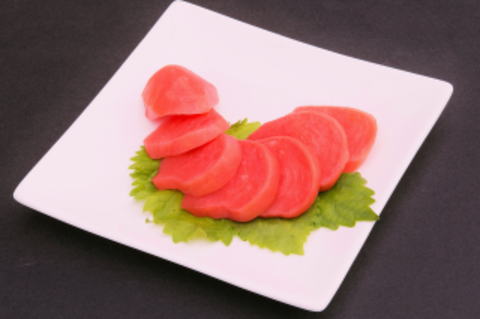
Akakaburaduke (Hida Red turnip) - Nuka-zuke
- Pickles made in brine and fermented rice bran (Nuka-miso). It is said that nuka-zuke of the present form was created at the beginning of the Edo Period (3%~4% salt in pickled vegetables 8~10% salt in nukamiso pH5)
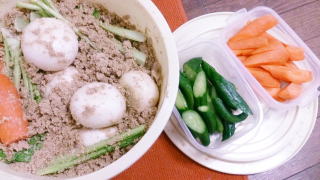
- Miso-zuke
- Pickled with miso. Misozuke is vegetable, meat, or fish pickled in miso paste (bean paste).
Saikyo pickles made by pickling seasonal fish and meat in saikyo miso extended with mirin are widely enjoyed.
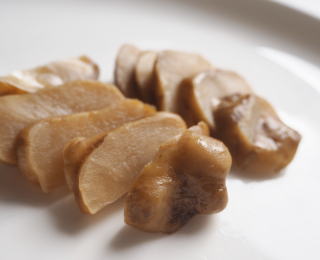
Jerusalem artichoke
- Sake lees
- Pickled with Sake lees . Narazuke has been present since more than 1300 years ago in the name of "kasuzuke."
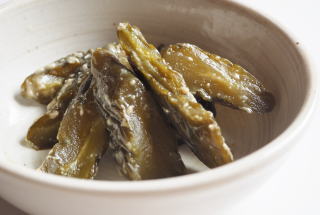
Cucumber
- Sugar and vinegar
- Pickle cured in brine and preserved in sugar and vinegar.It contains herbs
and spices. (pH4~4.5)
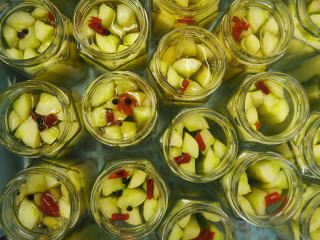
Zucchini - Unsalted
- “Sunki” is a fermented tsukemono food, also known as “sunkizuke”, traditionally
produced in Otaki-mura, Kaida-mura, and Mitake-mura on Kaida Kogen (plateau)
at the foot of Mt. Ontake (Kiso) located in an area far from Kiso Fukushima.
Pediococcus pentosaceus and Lactobacillus delbrueckii, which is a plant Lactobacillus, have been isolated from “sunki;” these bacterial species have been shown to have an immunoregulatory activity and a disease prevention effect, respectively.
 Sunki
Sunki
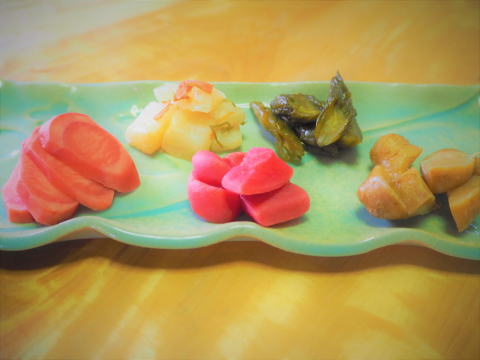
Hida Red Turnip Pickles
"Hida Red Turnip Pickles" is called "Akakaburazuke".
It was created from the native people's idea to eat and keep red turnips
to last for a long time.
Since salt used to be scarce and conserved,red turnips are pickled in "vegetable
lactic acid fermentation" (Lactobacillus derived from plants) harnessing
the high nutrient content of red turnips.
They have a great tast and sourness that are unique to fermented pickles.
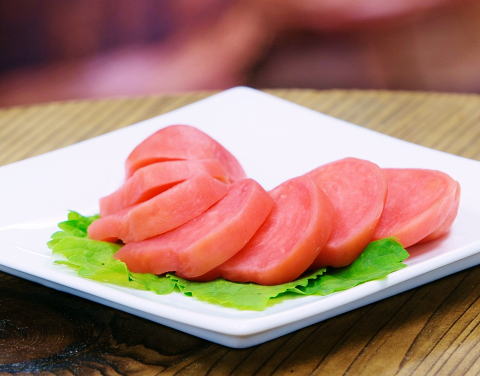
Fermented pickles, such as akakaburaduke(HidaTakayama yoshima) and sugukizuke
(pickled suguki in kyoto), which are made through the lactic acid fermentation
process, are increasingly receiving interest due to their health maintenance
function because they contain a large amount of lactic acid bacteria derived
from plants (so-called plant lactobacilli).
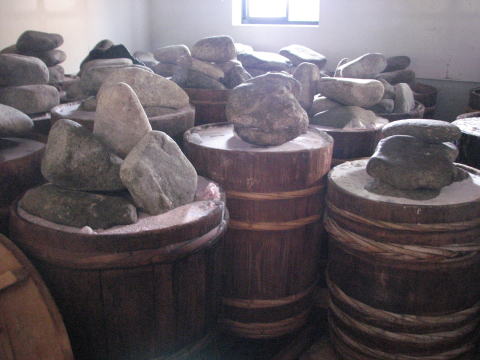
Sizes of these barrels varied small and large, from 100 liters to 300 liters, and some even dating back as far as the Tenpo Period (1830 ~ 1844), were collected. However, these barrels will start deterioating quickly if you do not use them. The once a year pickling extends the life of the barrels by preventing them from leaking. If it gets too dry, the barrel absorbs too much water and does not get the job done. If it is too loose, the bamboo hoop would have to get tightened.
A stone is placed on the barrel as a weight.

The minimum amount of pickling time is at least 3 months in the wood barrel, and some even pickle for a year. During this time when the pickling stone is set on top and is rested, it cannot be shaken or touched. Even with that much attention to it, sometimes a whole barrel must tearfully be discarded. Nowadays with extreme weather patterns occurring, there are many days when one must answer one’s own questions.
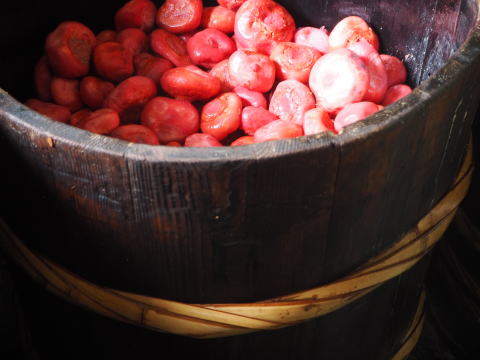
No added colors. Naturally fermented colors.
Color component of red turnip (anthocyanin) increases redness via lactic acid fermentation.
From the beginning, tsukemono has always been prepared and pickled in late autumn in the mountainous country. If you decide to do this process during the summer, you will have to create an artificial winter. Unless otherwise, the flavors will become too sour in the spring and summer temperature. In other words, the essential key to creating tsukemono lies in how you control the bacteria that helps the fermentation process.
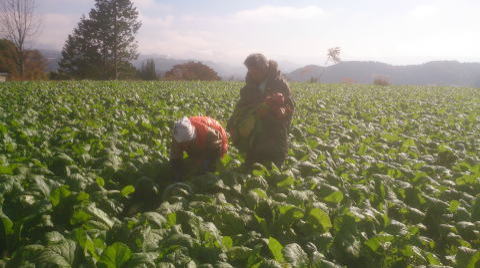
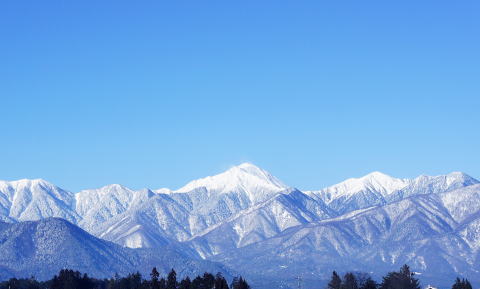
Lactobacillus can stand cold very well, and even if it is only 1 or 2 degrees, it can still ferment. The fermentation process that is weakened with other bacillus during the cold season is in fact the prime time for the lactobacillus. For all the reasons above, cold-season-preparation makes the most sense. Thankfully, even in an environment without oxygen, it breaks down sugar/glucose and creates lactose acid.
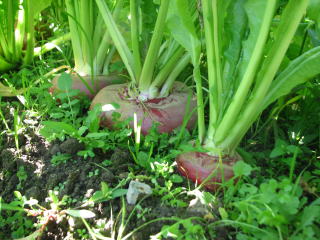
60% of the tsukemono that Yoshima Farm makes are red turnips. It is a traditional vegetable that is very delicate, prone to chain disorder, and is selective to regions as well. Sowing is done in early September and is harvested in November.
